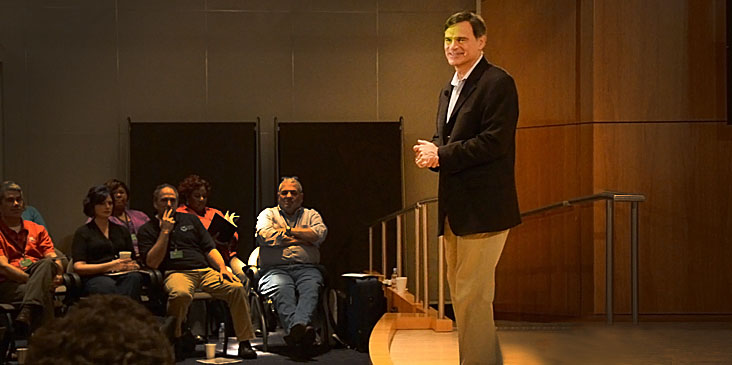Home
 What is a “New Traditional Educator?” It sounds like an oxymoron (e.g., Back to the Future).
What is a “New Traditional Educator?” It sounds like an oxymoron (e.g., Back to the Future).
Almost ten years ago at Microsoft, some colleagues and I were brainstorming what the name should be for a new campaign for soon-to-be released education products. Swirling around the conference room were options such as e-learning, digital learning, just-in-time learning and a plethora other trendy names and descriptions. None of them seemed right to me. Looking back at my own experience as a faculty member and associate dean, when new pedagogies or pedagogical devices were introduced we didn’t call the result, say, overhead projector learning. To us, it was all simply part of the fabric of learning. Fast forward to 2015 and I still hear a lot of talk about things such as flipped classrooms and online learning as if they were stand-alone pedagogical devices.
The focus I have had in my career has been around exploring the affordances and constraints of technology and how they might be best used to enhance, extend, augment, and in some cases even replace, traditional teaching. To me it, it is not about sweeping aside all of the traditional pedagogies when introducing new technologies and pedagogies. It does not necessarily mean getting rid of all legacy platforms. Rather, it means readjusting the balance between the two and utilizing whatever is appropriate for the teaching challenges we are facing at a specific point-in-time.
The purpose of this site is to distill and to share, from around the globe, some of the best examples, resources, guidance and opinions on the integration of technology into teaching and learning. The goal is to help faculty and campus leaders move the conversation and appropriate adoption of technology into day-to-day teaching and learning. The ultimate goal is to support improvements in college and university access, affordability and student educational outcomes. While I doubt you will agree with everything you find here, I hope at the very least you will find some of the material thought provoking and helpful in your efforts to enhance your teaching activities.
I welcome the opportunity to enter in a conversation with you.
Jim